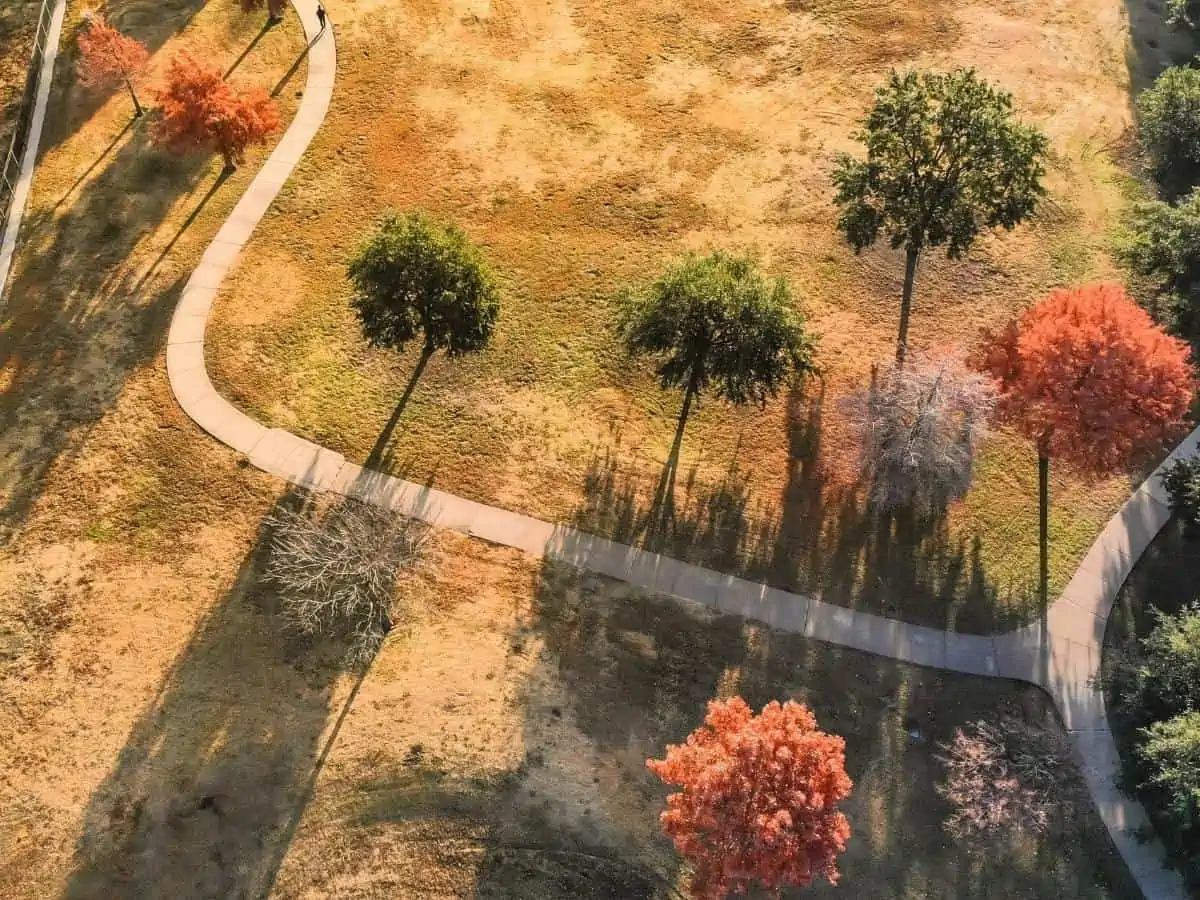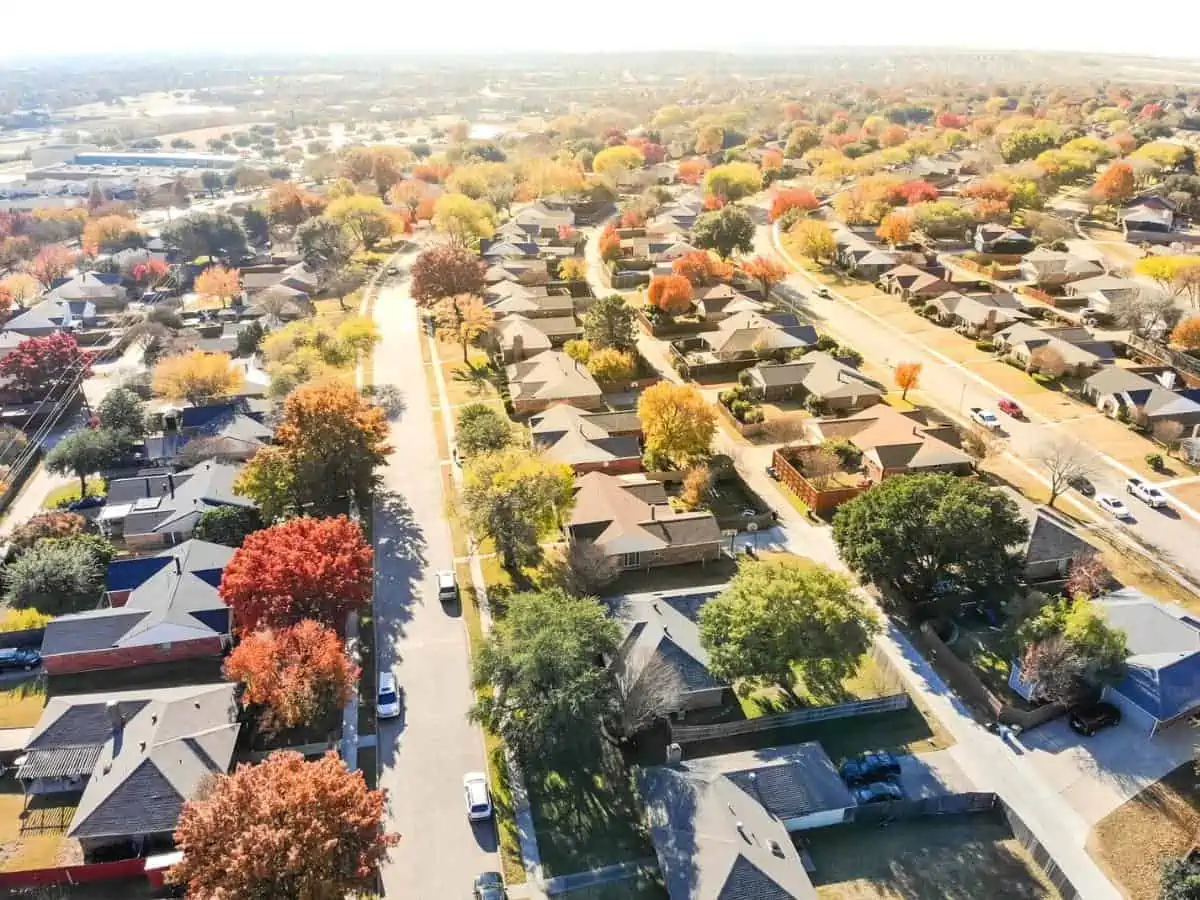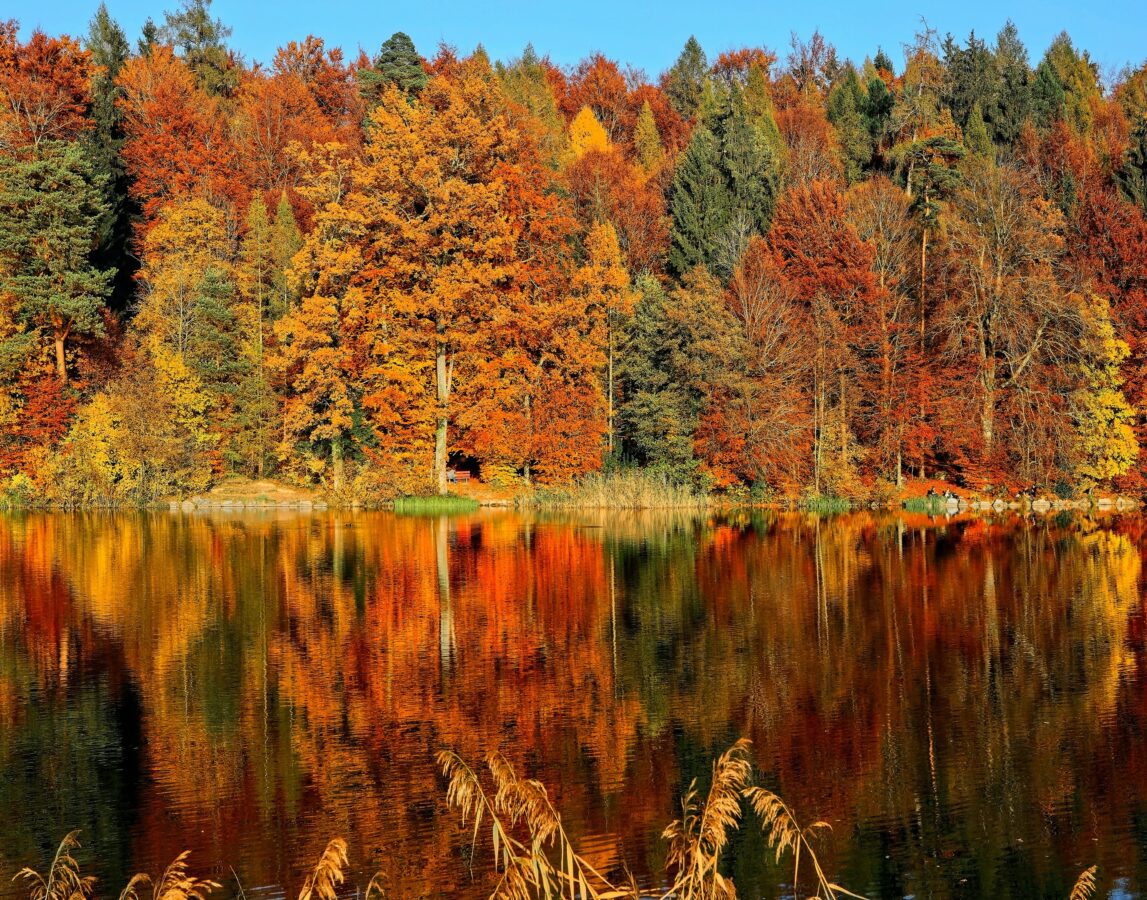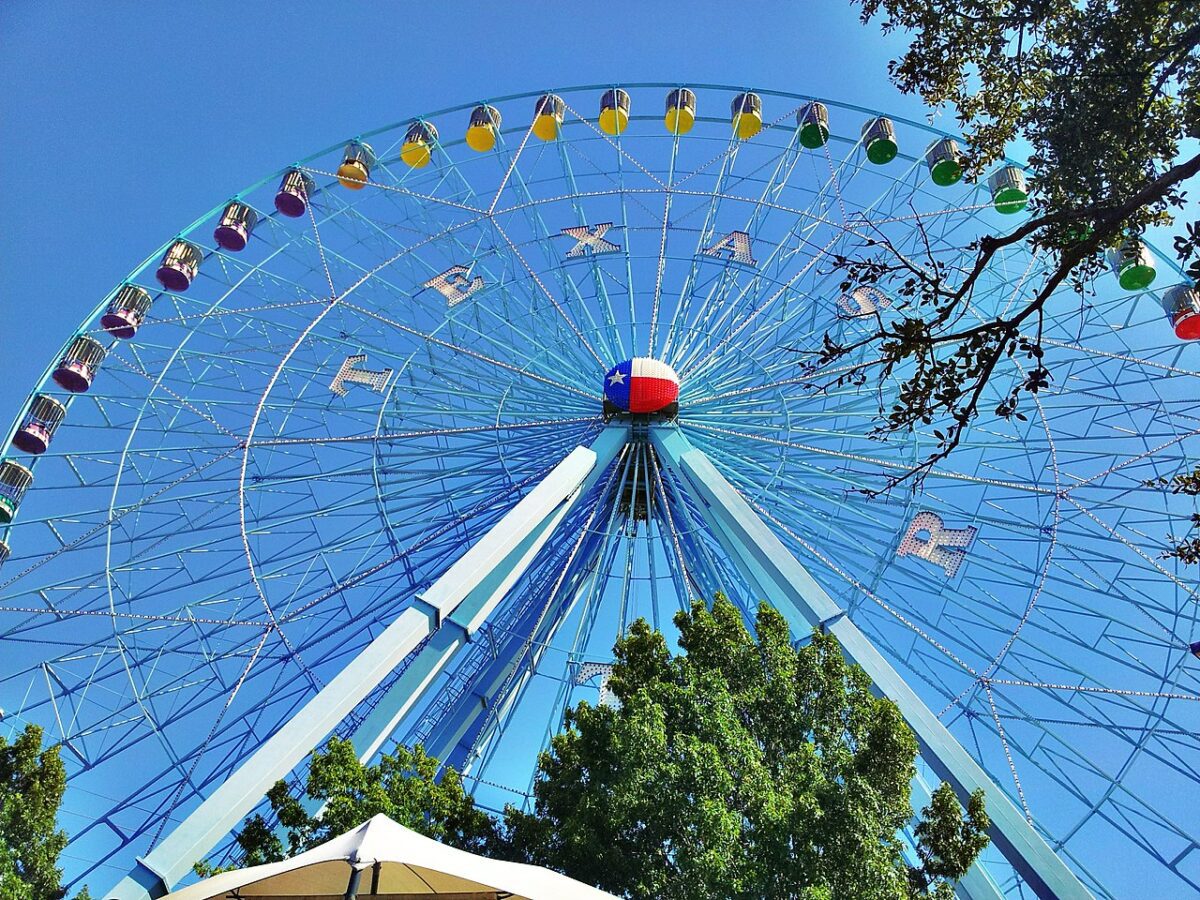Share the post "Feeling Fall: When Fall Begins in Texas and What to Expect"
If you’re planning a trip to Texas and you’ve been advised to avoid the summer, chances are you’re looking to make it a fall trip. So when does fall start in Texas?
Fall starts here on September 22 (also called the Autumnal Equinox) according to astronomical seasons, whereas according to meteorological seasons, fall begins in Texas on September 1.

When Does Fall Start in Texas?
The day that marks the start of fall in Texas depends on how you categorize the seasons. If you’re asking about the astronomical fall season, it starts on the 22nd of September. If you’re asking about the meteorological fall season, it starts in Texas on the 1st of September.
If you’re not familiar with such season categorization methods, you’re about to be. Generally, you should know that there are two types of seasons: astronomical and meteorological.
As a result, there’s astronomical fall and meteorological fall, astronomical winter and meteorological winter, and so on for every season.
Astronomical Season
Astronomical seasons are determined based on the position of our planet concerning the sun. The dates calculated for astronomical seasons are the ones that appear on calendars, notebooks, and so on.
The astronomical fall in Texas started on September 22, the same day as the entire Northern Hemisphere. This is also known as the Autumnal Equinox, when the sun is directly positioned above the equator, resulting in equal amounts of daylight and darkness.
Similarly, the rest of the seasons in Texas will astronomically start as follows:
- Winter: December 21.
- Spring: March 20.
- Summer: June 20.

Meteorological Season
On the other hand, there are meteorological seasons. This method determines the beginning and end of seasons based on the annual temperature cycle and the regular calendar.
Consequently, record-keeping is more suitable via meteorological seasons. Not to mention, seasons here are defined by full months instead of the last three months, like in the astronomical calendar.
For example, meteorological fall starts on September 1, includes September, October, and November, and ends on November 30.
Similarly, here are the dates for the rest of the meteorological seasons:
| Season | Dates |
| Winter | Starts on December 1 and ends on February 28 (29 in leap years) |
| Spring | Starts on March 1 and ends on May 31 |
| Summer | Starts on June 1 and ends on August 31 |

What Is the Weather Like in Fall in Texas?
The weather in Texas in the fall is pleasant as summer heat decreases and the rain chances are less than in winter. Texas is generally a mild-temperature season and a great time to visit the Lone Star State.
Temperature
In Texas state, fall comes with overall mild temperatures.
- The daily high temperatures fall by around 30 degrees F, ranging between 95 degrees F to 60 degrees F. They rarely reach beyond 99 degrees F or decrease below 55 degrees F.
- The daily low temperatures also fall by around 30 degrees F, ranging between 75 degrees F to 45 degrees F. They rarely reach beyond 80 degrees F or fall below 35 degrees F.
For reference, the temperatures in Austin on the hottest day of the year, August 6, usually range between 75 degrees F and 98 degrees F.
On the coldest day of the year, January 6, the temperatures in Austin typically fall between 42 degrees F to 60 degrees F.
It also snows in Texas. See our article on that here.
Temperatures in September
| City | Average High (°F) | Average Low (°F) |
|---|---|---|
| Houston | 88 | 70 |
| Dallas | 88 | 68 |
| San Antonio | 90 | 69 |
| Austin | 90 | 69 |
| Fort Worth | 87 | 67 |
| El Paso | 88 | 64 |
| Corpus Christi | 89 | 72 |
| Arlington | 87 | 68 |
| Plano | 87 | 67 |
| Laredo | 94 | 72 |
Temperatures in October
| City | Average High (°F) | Average Low (°F) |
|---|---|---|
| Houston | 82 | 62 |
| Dallas | 79 | 57 |
| San Antonio | 83 | 61 |
| Austin | 82 | 61 |
| Fort Worth | 78 | 56 |
| El Paso | 79 | 51 |
| Corpus Christi | 84 | 67 |
| Arlington | 78 | 57 |
| Plano | 78 | 56 |
| Laredo | 88 | 65 |
Temperatures in November
| City | Average High (°F) | Average Low (°F) |
|---|---|---|
| Houston | 72 | 52 |
| Dallas | 66 | 45 |
| San Antonio | 73 | 50 |
| Austin | 72 | 49 |
| Fort Worth | 66 | 44 |
| El Paso | 65 | 39 |
| Corpus Christi | 75 | 56 |
| Arlington | 66 | 45 |
| Plano | 65 | 44 |
| Laredo | 78 | 54 |
Sun
During the fall in Texas, the length of the day drops very quickly. Comparing the beginning of the season to its end, the length of the day decreases by around 2 hours and 30 minutes. This translates into an average daily reduction of about a minute and a half.
September 1 is the most prolonged fall day, lasting around 12 hours and 45 minutes. November 30 is the shortest fall day, lasting around 10 hours and 20 minutes in daylight.
Here are some interesting facts about the sunrise and sunset times in Austin:
- The latest sunrise of the fall is on November 5 at 7:48 AM.
- The earliest sunrise is November 6 at 6:49 AM, almost an hour earlier.
- The latest sunset is on September 1 at 7:53 PM.
- The earliest sunset is on November 30 at 5:30 PM, nearly two and a half hours earlier.
Clouds
Here, the fall features a constant but not very dense cloud cover. Generally, the sky is cloudy primarily or overcast during the season, around 30 to 35 percent of the time.
October 10 is typically the clearest fall day, recording the lowest chance of mostly cloudy or overcast and the highest chance of clear, mostly clear, or partly cloudy.
Let’s take Austin, for example, again. The cloudiest day of the year is January 3, when the chance of mostly cloudy or overcast conditions is 45 percent.
On the other hand, the clearest day of the year, June 13, has a 72 percent chance of clear, mostly clear, or partly cloudy conditions.

Fall Outdoor Activities in Texas
With its diverse landscapes and generally mild fall weather, Texas offers various outdoor activities. Here are some popular options for enjoying the outdoors in Texas during the fall season:
- Hiking and Nature Trails: Fall is an ideal time for hiking in Texas. The cooler temperatures and changing foliage make it a great time to explore the state’s numerous hiking trails. Some popular destinations include Big Bend National Park, the Hill Country, and the Piney Woods.
- Bird Watching: Texas is a prime location, especially during the fall migration. The Gulf Coast, particularly areas like High Island and the Rio Grande Valley, are famous for their birding opportunities.
- Camping: With cooler temperatures, camping becomes a more comfortable experience. State parks like Palo Duro Canyon, Garner State Park, and Davis Mountains offer stunning natural beauty and are less crowded in the fall.
- Fishing: Fall fishing in Texas can be pretty rewarding. Lakes, rivers, and the Gulf Coast offer opportunities for fishing bass, trout, redfish, and flounder.
- Attending Festivals: Fall in Texas is festival season. Many outdoor events include the Texas Renaissance Festival, Oktoberfests in various cities, and county fairs.
- Cycling and Mountain Biking: Places like the LBJ National Grassland near Decatur, Big Bend Ranch State Park, and the Barton Creek Greenbelt in Austin are popular for mountain biking.
- Hunting: Fall marks the beginning of hunting season in Texas. Hunters can find game such as deer, turkey, and quail.
- Canoeing and Kayaking: Rivers like the Guadalupe, the Colorado, and the Brazos are popular for paddling trips, offering calm waters for beginners and challenging routes for experienced paddlers.
- Visiting Pumpkin Patches and Corn Mazes: Many farms across Texas offer pumpkin picking, corn mazes, and other family-friendly activities.
- Enjoying State and National Parks: Parks like Guadalupe Mountains National Park and Lost Maples State Natural Area are known for their beautiful fall foliage.
- Road Trips: Take scenic drives to see the fall colors, especially in the Texas Hill Country and East Texas, where the changing leaves can be spectacular.
- Horseback Riding: Exploring the Texas countryside on horseback is a unique way to enjoy the fall scenery.

Events in Fall
Various events during the fall season appeal to a wide range of interests. Here’s a list of notable fall events across the state:
- State Fair of Texas (Dallas): This annual event, typically held from late September to October, is famous for its Big Tex statue, carnival rides, live music, and unique food offerings.
- Austin City Limits Music Festival (Austin): A two-weekend music festival in October featuring a diverse lineup of big-name and emerging artists across various genres.
- Texas Renaissance Festival (Todd Mission): Running from October to November, this is one of the nation’s largest Renaissance theme parks, offering a unique blend of theatre, circus acts, artisan marketplace, and food.
- Wurstfest (New Braunfels): A 10-day festival in November celebrating German culture, food, and music, especially the traditional Wurst or sausages.
- Fort Worth Stockyards Championship Rodeo (Fort Worth): Held every Friday and Saturday night, it showcases traditional rodeo events and is a great way to experience Texas cowboy culture.
- Dia de los Muertos Festivals (Various Cities): Celebrated in early November, cities like San Antonio and El Paso host vibrant festivals with traditional music, dance, and altars to honor departed loved ones.
- Houston Turkish Festival (Houston): Celebrating Turkish culture with food, live music, dance, and art, usually held in November.
- Pecan Street Festival (Austin): One of the country’s largest free arts and crafts festivals, held bi-annually on Sixth Street.
- Great Texas Balloon Race (Longview): A hot air balloon event that features balloon glows, races, and other family-friendly activities.
- Texas Book Festival (Austin): A literary event typically held in October featuring authors, book signings, and panel discussions.
Fall in Texas FAQs
What Is the Best Time to Visit Texas?
The best time to visit our states is the spring, from March to May, and the fall, from September to November.
This is because of the mild temperatures experienced in these seasons, which makes them the best times for tourists to hang around here.
Fall is even more recommendable because it has less rain, lower day temperatures, and fewer tourists than in the summer.
What Is the Worst Time to Visit Texas?
The worst time to visit Texas is in the summer, from June to August. This is because summer has sizzling hot temperatures and humid and rainy conditions, although sometimes there will be thunderstorms in summer.
Share the post "Feeling Fall: When Fall Begins in Texas and What to Expect"
Christian Linden is a seasoned writer and contributor at Texas View, specializing in topics that resonate with the Texan community. With over a decade of experience in journalism, Christian brings a wealth of knowledge in local politics, culture, and lifestyle. He holds a Bachelor's degree in Communications from the University of Texas. When he's not writing, Christian enjoys spending weekends traveling across Texas with his family, exploring everything from bustling cities to serene landscapes.











